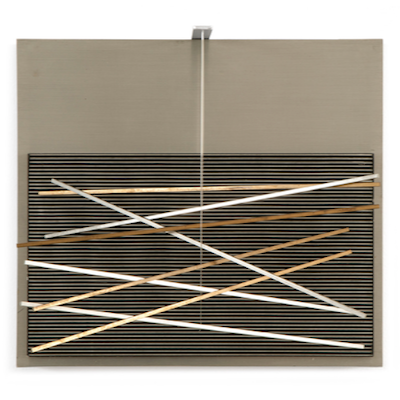
Details
Artist
Styles
Serigraph on Arches Paper - Image size: 48 x 46 cm - Full sheet: 56 x 76 cm // Blue Composition by Victor Vasarely is a serigraph print that encapsulates the essence of Op Art with its mesmerizing use of geometric forms and vibrant color contrasts. The work features a grid of blue squares that form a spherical illusion, creating a sense of depth and movement. Within the composition, squares and rectangles shift in hue from blue to red to green, enhancing the three-dimensional effect. Vasarely’s meticulous arrangement of colors and forms creates an optical illusion that challenges perception, making the surface appear as if it’s bulging outward. This piece reflects Vasarely’s fascination with visual dynamics and spatial ambiguity, inviting viewers to explore the limits of visual perception.
Blue Composition, c. 1980
form
Medium
Size
76 x 56 cm
- Inches
- Centimeters
Edition
Price
- USD
- EUR
- GBP
Details
Artist
Styles
Serigraph on Arches Paper - Image size: 48 x 46 cm - Full sheet: 56 x 76 cm // Blue Composition by Victor Vasarely is a serigraph print that encapsulates the essence of Op Art with its mesmerizing use of geometric forms and vibrant color contrasts. The work features a grid of blue squares that form a spherical illusion, creating a sense of depth and movement. Within the composition, squares and rectangles shift in hue from blue to red to green, enhancing the three-dimensional effect. Vasarely’s meticulous arrangement of colors and forms creates an optical illusion that challenges perception, making the surface appear as if it’s bulging outward. This piece reflects Vasarely’s fascination with visual dynamics and spatial ambiguity, inviting viewers to explore the limits of visual perception.
- Recently Added
- Price (low-high )
- Price (high-low )
- Year (low-high )
- Year (high-low )
What is kinetic art?
Kinetic art is an international movement that emerged in the 1920s and gained prominence in the 1960s, referring to art that involves both apparent and real motion. It encompasses any medium that includes movement, either relying on actual motion for its effect or being perceived as moving by the viewer. Early examples include canvas paintings designed to create optical illusions of movement. Today, kinetic art often refers to three-dimensional figures and sculptures, such as those operated by machines or those that move naturally. The movement covers a variety of styles and techniques that frequently overlap.









































































